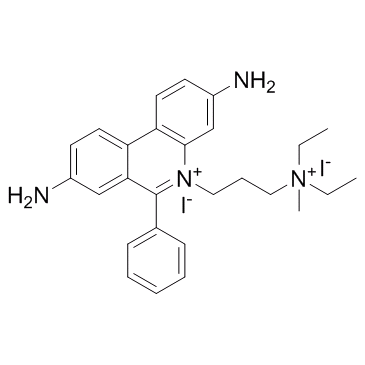| Structure | Name/CAS No. | Articles |
|---|---|---|
 |
sodium chloride
CAS:7647-14-5 |
|
 |
Ethanol
CAS:64-17-5 |
|
 |
magnesium sulfate
CAS:7487-88-9 |
|
 |
SODIUM CHLORIDE-35 CL
CAS:20510-55-8 |
|
 |
DL-Carnitine hydrochloride
CAS:461-05-2 |
|
 |
Propidium Iodide
CAS:25535-16-4 |